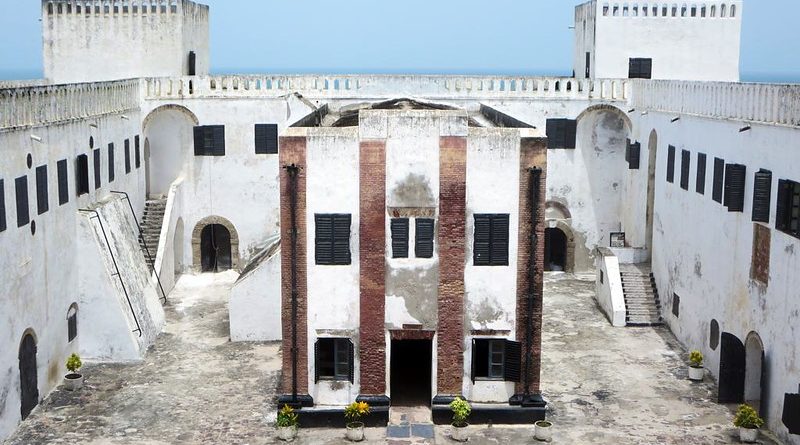Elmina Castle and its Dark History of Enslavement
Historic Facts
Where: Cape Coast, Ghana, West Africa
When: 15th Century
History: Sorrowful prison to hold slaves destined for the ‘new world’
Go There For: Ominous damp dungeons of colonial oppression
Where It’s At
Elmina is located along the southern Cape Coast region of Ghana, west of Accra. The town itself is primarily a fishing port, with a bustling commercial scene and lively atmosphere. Famous on account of the colonial fort built here in 1482 by the Portuguese, the small fishing village of Elmina is a picturesque stop-off along Cape Coast steeped in history.
This area became heavily competed for in terms of its strategic position for trade, by other European powers. As the plantations in America took off, the trade in slaves expanded, and Elmina became the last place many thousands of Africans would see of their homeland, for many it would also be the last place they would see altogether, due to the high death rates incurred during the middle passage in such abominable conditions. At the height of the trade, 30,000 slaves were passing through Elmina each year on their way to the Americas. This continued for nearly 300 hundred years in appalling conditions. There were many horrors witnessed here, as it is where the slaves were detained and tortured before being shipped to the ‘New World’.
History of Elmina Castle
The Portuguese built the castle of St George El Mina in 1482, in a region rich in gold and ivory resources. Elmina Castle is one of West Africa’s oldest standing buildings; it means ‘the mine’ in Portuguese. It was also the first permanent structure south of the Sahara built by the Europeans. The dungeons are the most poignant a reminder of those dark times.
The castle served as an outpost for the Portuguese to trade their goods for slaves, many thousands being kept in the dark, damp dungeons. It was also heavily guarded against attacks by other European empires that were keen on gaining its strategic position, yet not so heavily guarded against less likely inland attacks by the Africans. The cannons are still in evidence from the conflicting time. The Dutch captured the castle in the mid sixteen hundreds after previous unsuccessful attempts, and other nations that fought to control it include the English. The castle was originally a trading post for the countries gold, ivory and timber, this later developed into a point on the infamous slave triangle transporting human cargo to America and the Caribbean, raw materials such as cotton and rubber to Britain and manufactured goods such as clothing and weaponry back to the West Coast of Africa.
Visiting Elmina Today
You can tour the castle with a guide for C/3000 (US$0.40), and don’t forget your camera as the views here are terrific. If you fancy strolling around at your own pace, entrance to Elmina Castle costs C/1000. Opposite you can visit Fort St Jago, the primary defence for the castle against it’s many invasions, and it has now been converted into a guesthouse providing visitors with accommodation. The entrance and tour prices are the same as for the castle.
Where To Stay
If you don’t fancy staying in the renovated fort, your other options for accommodation include Nyansapow Hotel for under US$7.50 or the Oyster Bay Hotel for under US$15.
Other Things to See and Do
The famous festival in Elmina, Bakatue, takes place on the first Tuesday in July. The literal meaning of the festival is the opening of the Benya lagoon into the sea, symbolically it celebrates the beginning of the fishing season, marked by a parade of the towns chiefs in their full regalia, followed by singers, dancers and stilt walkers.
More Information
Ghana Link
A general information site including news and articles and a forum to get in touch with local people.
Words by Jenna Colbourne
Main image: courtesy of David Stanley, Flickr creative commons




